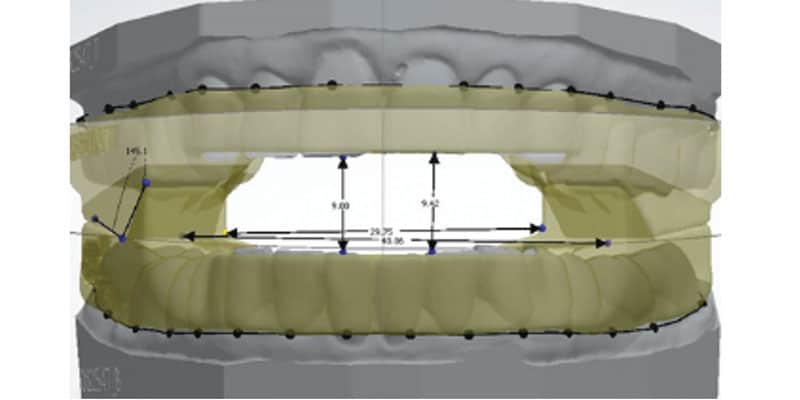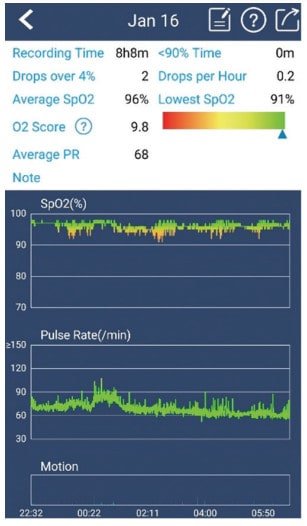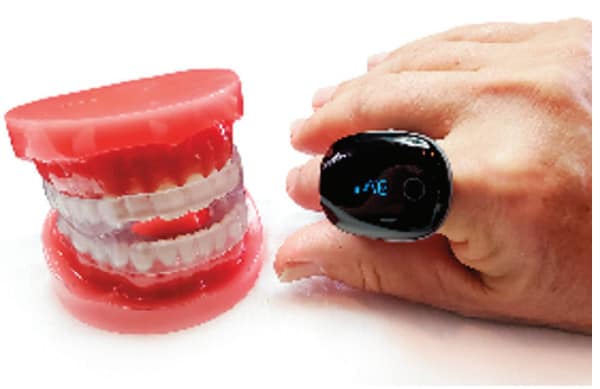The Slow Wave DS8 Sleep Appliance addresses the problems of tongue position and promotes nasal breathing. Also, the Wellue O2Ring™ provides active feedback. Find out more about this multitasking system.

Current treatments for Obstructive Sleep Apnea (OSA) mostly focus on the tongue. Rightfully so, for tongue position is critical to determine whether someone gets quality sleep or has disruptive breathing during sleep. Some devices try to bypass it (CPAP; BIPAP); most oral appliances try to pull it forward along with the mandible, and hypoglossal nerve stimulation nudges the tongue forward to clear the airway.
Most of these devices don’t give the tongue anywhere to go. The result is pain, substandard efficacy, and ultimately, non-compliance. The multi-patented Slow Wave DS8 takes a totally different approach to OSA by focusing primarily on giving the tongue someplace to go. Doing so naturally stimulates the tongue to move into a forward position. Why is this important? In 2020, a study published in Nature and Science of Sleep demonstrated that “OSA patients, intolerant to CPAP have a strong positive correlation between a high tongue position based on the Friedman Tongue Position (FTP) grade and presence of retropalatal Complete Concentric Collapse (CCC).”1
How do you give the tongue more room during sleep? Slow Wave Engineering discovered through rapid prototyping using 3D printing that the “secret sauce” is to provide at least 8mm of vertical opening and at least 30mm of horizontal or lateral room. Anything less won’t cause the tongue to posture forward during sleep. 8mm of vertical opening leaves lips closed and still encourages optimal nasal breathing.
But the tongue is not the only problem for people who suffer from OSA. Environmental conditions and sleep position itself make up the other 20% of the problem. People who drink alcohol before bed, take certain medications, or get exposed to chemicals during the day, are going to have issues with natural sleep patterns. Learning to avoid what bothers you and having the body learn to eradicate the sleep positions that contribute to OSA are critical to great sleep.
Slow Wave is the only company that not only encourages daily sleep testing but actively enables it by supplying a Wellue O2Ring™ with every appliance prescribed.


By turning on the active feedback of the ring, it will gently vibrate when oxygen levels drop below a preset value (we recommend 89%). This stimulates the wearer to change sleeping positions to stop the vibration. After one to several nights of wearing, this position change becomes automatic without arousals.
Biofeedback trains the body to stay or only move into sleep positions that do not trigger apnea events. Oximetry biofeedback, combined with wearing the Slow Wave DS8, has provided up to 90%+ efficacy rates in patients who follow the routine. It also provides Slow Wave with a great database of what environmental factors affect patient sleep. More on that in the next article.
Read more about the Slow Wave DS8 sleep appliance, a next-generation custom 3D-printed oral appliance for sleep apnea and snoring at https://dentalsleeppractice.com/slow-wave-inc/.
- Zhao C, Viana A, Ma Y, Capasso R. High Tongue Position is a Risk Factor for Upper Airway Concentric Collapse in Obstructive Sleep Apnea: Observation Through Sleep Endoscopy. Nat Sci Sleep. 2020 Oct 19;12:767-774. doi: 10.2147/NSS.S273129. PMID: 33117012; PMCID: PMC7585274.

